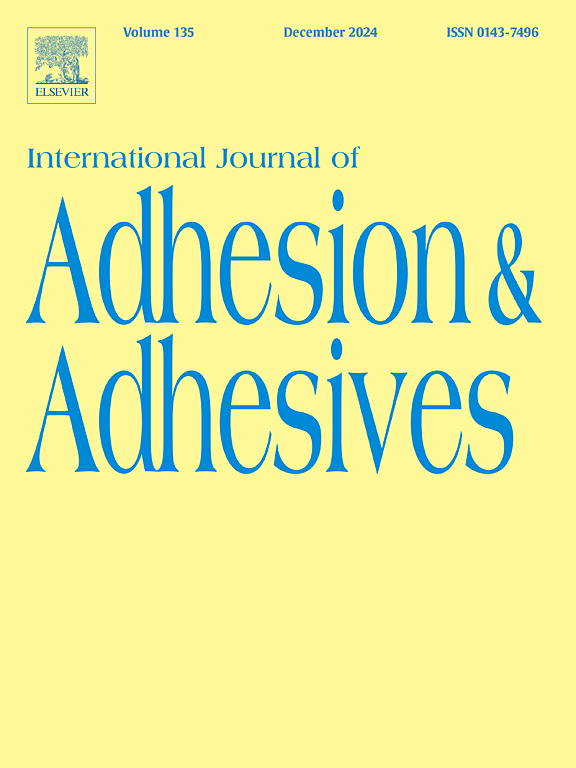Enhancing the performance of cold-setting phenol–resorcinol–formaldehyde resin adhesives through condensation extension
IF 3.5
3区 材料科学
Q2 ENGINEERING, CHEMICAL
International Journal of Adhesion and Adhesives
Pub Date : 2025-02-02
DOI:10.1016/j.ijadhadh.2025.103958
引用次数: 0
Abstract
Phenol–resorcinol–formaldehyde (PRF) are the most essential adhesives for laminated timber products. PRF resins are known for their excellent strength and durability. However, when cold-pressed, PRF resins have various issues, including free phenol in the resin solution, which cannot react with formaldehyde. Aside from decreasing reactivity, excessive amounts of free phenol will render PRF resins hazardous. In addition, using hardeners containing significant amounts of paraformaldehyde might result in high formaldehyde emissions if the resin and hardener do not react completely during curing. Therefore, this research aims to reduce the possibility of high levels of free phenol and formaldehyde in PRF resins by synthesizing the resins with various condensation times and using an oxazolidine hardener to replace paraformaldehyde. PRF resins' properties and adhesion performance with various condensation times were evaluated. The results showed that PRF resins' viscosity and solids content increased when the condensation time increased, whereas their gelation time reduced. PRF resins with a longer condensation time had a higher proportion of methylene linkage and greater reactivity, as evidenced by lower apparent activation energy during curing. Furthermore, increasing the condensation time of PRF resins enhanced the adhesion strength of glue-laminated timber products bonded with these resins. The results showed that increasing the condensation time of PRF resins significantly impacts their reactivity and performance.

通过缩合延伸提高冷固酚醛-间苯二酚-甲醛树脂胶粘剂的性能
酚醛-间苯二酚-甲醛(PRF)是复合木制品中最重要的胶粘剂。PRF树脂以其优异的强度和耐久性而闻名。然而,当冷压时,PRF树脂有各种问题,包括树脂溶液中的游离酚,它不能与甲醛反应。除了降低反应性外,过量的游离酚会使PRF树脂有害。此外,使用含有大量多聚甲醛的硬化剂,如果树脂和硬化剂在固化过程中没有完全反应,可能会导致高甲醛排放。因此,本研究旨在通过合成不同缩合次数的树脂,并使用恶唑烷固化剂取代多聚甲醛,来降低PRF树脂中游离酚和甲醛含量过高的可能性。考察了不同缩聚时间下PRF树脂的性能和粘接性能。结果表明,PRF树脂的粘度和固相含量随缩聚时间的增加而增加,而缩聚时间则减少。缩聚时间越长,树脂的亚甲基连接比例越高,反应活性越强,固化过程中的表观活化能越低。此外,增加PRF树脂的冷凝时间可以提高与这些树脂粘合的胶合木制品的粘接强度。结果表明,延长缩聚时间对树脂的反应性和性能有显著影响。
本文章由计算机程序翻译,如有差异,请以英文原文为准。
求助全文
约1分钟内获得全文
求助全文
来源期刊

International Journal of Adhesion and Adhesives
工程技术-材料科学:综合
CiteScore
6.90
自引率
8.80%
发文量
200
审稿时长
8.3 months
期刊介绍:
The International Journal of Adhesion and Adhesives draws together the many aspects of the science and technology of adhesive materials, from fundamental research and development work to industrial applications. Subject areas covered include: interfacial interactions, surface chemistry, methods of testing, accumulation of test data on physical and mechanical properties, environmental effects, new adhesive materials, sealants, design of bonded joints, and manufacturing technology.
 求助内容:
求助内容: 应助结果提醒方式:
应助结果提醒方式:


